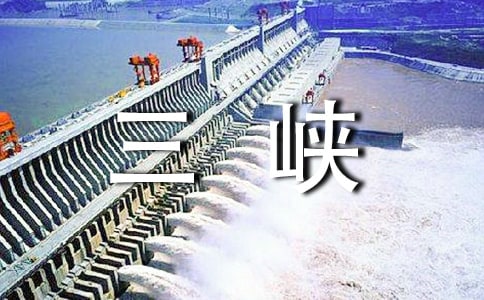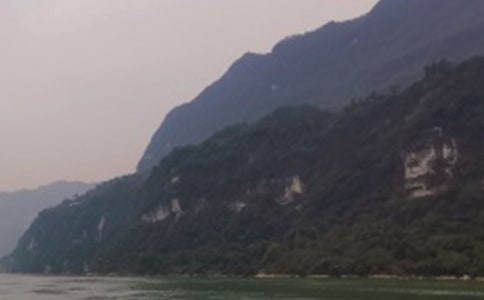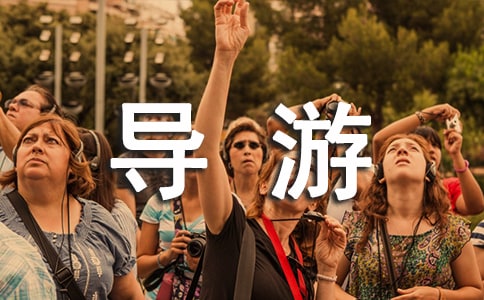北京故宫英文导游词
Ladies and Gentlemen:
I am pleased to serve as your guide today.
This is the palace museum; also know as the Purple Forbidden City. It is the largest and most well reserved imperial residence in China today. Under Ming Emperor Yongle, construction began in1406. It took14years to build the Forbidden City. The first ruler who actually lived here was Ming Emperor Zhudi. For five centuries thereafter, it continued to be the residence of23successive emperors until1911when Qing Emperor Puyi was forced to abdicate the throne .In1987, the United Nations Educational, Scientific and Cultural Organization recognized the Forbidden City was a world cultural legacy.
It is believed that the Palace Museum, or Zi Jin Cheng (Purple Forbidden City), got its name from astronomy folklore, The ancient astronomers divided the constellations into groups and centered them around the Ziwei Yuan(North Star). The constellation containing the North Star was called the Constellation of Heavenly God and star itself was called the purple palace. Because the emperor was supposedly the son of the heavenly gods, his central and dominant position would be further highlighted the use of the word purple in the name of his residence. In folklore, the term ”
an eastern purple cloud is drifting” became a metaphor for auspicious events after a purple cloud was seen drifting eastward immediately before the arrival of an ancient philosopher, LaoZi, to the Hanghu Pass. Here, purple is associated with auspicious developments. The word jin (forbidden) is self-explanatory as the imperial palace was heavily guarded and off-explanatory as the imperial palace was heavily guarded and off-limits to ordinary people.
The red and yellow used on the palace walls and roofs are also symbolic. Red represents happiness, good fortune and wealth. Yellow is the color of the earth on the Loess Plateau, the original home of the Chinese people. Yellow became an imperial color during the Tang dynasty, when only members of the royal family were allowed to wear it and use it in their architecture.
The Forbidden City is rectangular in shape. It is960 meters long from north to south and750 meter wide from east west. It has9,900 rooms under a total roof area150,000 square meters .A52-meter-wide-moat encircles a -meter—high wall which encloses the complex. Octagon —shaped turrets rest on the four corners of the wall. There are four entrances into the city: the Meridian Gate to the south, the Shenwu Gate(Gate of Military Prowess) to the north, and the Xihua Gate(Gate of military Prowess) to the north, and the Xihua Gate(Western Flowery Gate )to the west ,the Donghua (Eastern Flowery Gate) to the east.
Manpower and materials throughout the country were used to build the Forbidden City. A total of230,000 artisans and one million laborers were employed. Marble was quarried from fangshan Country Mount Pan in Jixian County in Hebei Province. Granite was quarried in Quyang County in Hebei Province. Paving blocks were fired in kilns in Suzhou in southern China. Bricks and scarlet pigmentation used on the palatial walls came from linqing in Shandong Province .Timber was cut ,processed and hauled from the northwestern and southern regions.
The structure in front of us is the Meridian Gate. It is the main entrance to the forbidden City. It is also knows as Wufenglou(Five-Phoenix Tower). Ming emperors held lavish banquets here on the15th day of the first month of the Chinese lunar year in hornor of their counties .They also used this place for punishing officals by flogging them with sticks.
Qing emperors used this building to announce the beginning of the new year. Qing Emperor Qianglong changed the original name of this announcement ceremony from ban li(announcement of calendar)to ban shou(announcement of new moon )to avoid coincidental association with another Emperor` s name, Hongli, which was considered a taboo at that time. Qing Dynasty emperors also used this place to hold audience and for other important ceremonies. For example,when the imperial army returned victoriously from the battlefield ,it was here that the Emperor presided over the ceremony to accept prisoners of war.共
(After entering the Meridian Gate and standing in front of the Five Marble Bridges on Golden Water River)
now we are inside the Forbidden we start our tour, I would like to briefly introduce you to the architectural patterns befour us .To complete this solemn, magnificent and palatial complex, a variety of buildings were arranged on a north-south axis, and8-kilometer-long invisible line that has become an inseparable part of the City of Beijing. The Forbidden City covers roughly one –third of this central axis. Most of the important building in the Forbidden City weree arranged along this line. The design and arrangement of the palaces reflect the solemn dignity of the royal court and rigidly –stratified feudal system.
The Forbidden City is divided into an outer and an inner are now standing on the southernmost part of the outer count. In front of us lies the Gate of supreme Harmony .The gate is guarded by a pair of bronze lions ,symbolizing imperial power and dignity. The lions were the most exquisite and biggest of its kind. The one on the east playing with a ball is a male, and ball is said to represent state unity. The other one is a female. Underneath one of its fore claws is a cub that is considered to be a symbol of perpetual imperial succession. The winding brook before us is the Golden Water River. It functions both as decoration and fire control .The five bridges spanning the river represent the five virtues preached by Confucius :benevolence, righteousness, rites, intellence and fidelity. The river takes the shape of a bow and the north-south axis is its arrow. This was meant to show that the Emperors ruled the country on behalf of God.
(In front of the Gate of Supreme Harmony)
The Forbidden City consists of an outer countyard and an inner enclosure. The out count yard covers a vast space lying between the Meridian Gate and the Gate of Heavenly Purity. The “three big halls” of Supreme Harmony, Complete Harmony and Preserving Harmony constitute the center of this building group. Flanking them in bilateral symmetry are two groups of palaces: Wenhua (Prominent Scholars) and Wuying (Brave Warriors) . The three great halls are built on a spacious “H”-shaped,8-meter-high, triple marble terrace, Each level of the triple terrace is taller than the on below and all are encircled by marble balustrades carved with dragon and phoenix designs. There are three carved stone staircases linking the three architectures .The hall of supreme Harmony is also the tallest and most exquisite ancient wooden-structured mansion in all of China. From the palace of Heavenly Purith northward is what is known as the inner court, which is also built in bilaterally symmetrical patterns. In the center are the Palace of Heavenly Purity, the Hall of Union and Peace and Palace of Earthly Tranquility, a place where the Emperors lived with their families and attended to state affairs. Flanking these structures are palaces and halls in which concubines and princes lived. There are also three botanical gardens within the inner count, namely, the imperial Garden, Caning garden and Quailing garden. An inner Golden Water River flows eastwardly within the inner court. The brook winds through three minor halls or palaces and leads out of the Forbidden City. It is spanned by the White Jade Bridge. The river is lined with winding, marble –carved balustrades. Most of the structures within the Forbidden City have yellow glazed tile roofs.
Aside from giving prominence to the north-south axis, other architectural methods were applied to make every group of palatial structures unique in terms of terraces, roofs, mythical monsters perching on the roofs and colored, drawing patterns. With these, the grand contour and different hierarchic spectrum of the complex were strengthened. Folklore has it that there are altogether9,999room-units in the Forbidden City. Since Paradise only has10,000 rooms, the Son of Heaven on earth cut the number by half a room. It is also rumoured that this half –room is located to the west of the Wenyuange Pavilion (imperial library). As a matter of fact, although the Forbidden City has more than9,000 room-units, this half-room is nonexistent .The Wenyuange Pavilion is a library where “Si Ku Quan Shu”- China `s first comprehensive anthology-was stored.
【北京故宫英文导游词】相关文章:
2.北京故宫的导游词
3.北京故宫导游词
4.英文导游词



